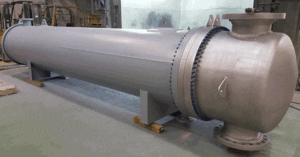
Implementing marketing automation enabled Cataract Steel to increase engagement with sales reps and identify new opportunities.
Founded in 1977, Cataract Steel designs and manufactures heat transfer equipment for customers in industries such as oil and gas, chemical production, and paper and pulp.
All of the Niagra Falls, NY-based company’s work is custom. Often, what the company builds is part of a bigger project, so the company’s units are added in with pumps, filters or other processing equipment. For example, natural gas often has too much water in it, so Cataract Steel makes units to boil the water out of the gas, says Scott Costanzo, president, Cataract Steel.
The average price per unit is $120,000, but it could go up to $1 million, depending on the project. The sales cycle varies—often, planning on a large project may start years in advance. The company might work on a design but then not hear from a prospect for up to two years. Once something is approved, the cycle runs about six months.
Cataract Steel has an independent sales force, with about 25 reps throughout the U.S. Many work at the plant level calling on clients. The space has more competition than the initiated might think, Costanzo says, noting that every time you drive past a smokestack there are 20 heat exchangers in there, so the need is significant.
The company doesn’t have an internal marketing department, and in the past had never actively done any marketing, generating enough work to keep their facilities at capacity by relying on word of mouth and the work of sales reps. In recent years, the company wanted to diversify the customer base and keep up with changing market needs.
Part of the appeal of marketing automation was that it could provide accountability for the independent sales reps. “These reps often carry six to eight product lines, so you’re fighting for their time,” said Costanzo, noting that leads must be, of course, responded to quickly. “When you can provide them with a tool like this, it puts you top of mind.”
Last summer, Cataract Steel began working with Salesfusion’s managed service team to create a marketing campaign for a new product line, highlighting product features and user case studies. Within a few weeks of the launch, five new opportunities were generated.
At the moment, emails are being sent once a month. Product messaging is getting attention, as prospects request more information. Because the target audience is engineers, they have a thirst for the details, Costanzo notes.
Clickthrough rates have been steadily improving, with existing clients responding better than prospects, increasing the potential for cross- and up-selling.
The company is hoping to build on the strong reputation it has in the western New York-Pennsylvania region. Significant growth for the company has come out of areas like Texas and the Carolinas as well.
The initial tests focused on chemical companies in the southeast and oil and gas in Texas. As the company expands the focus of its marketing automation efforts, it will look to the paper and pulp business as well.
Related Articles:
Marketing Automation Adds Up for Bookkeeping Firm



 Network
Network

